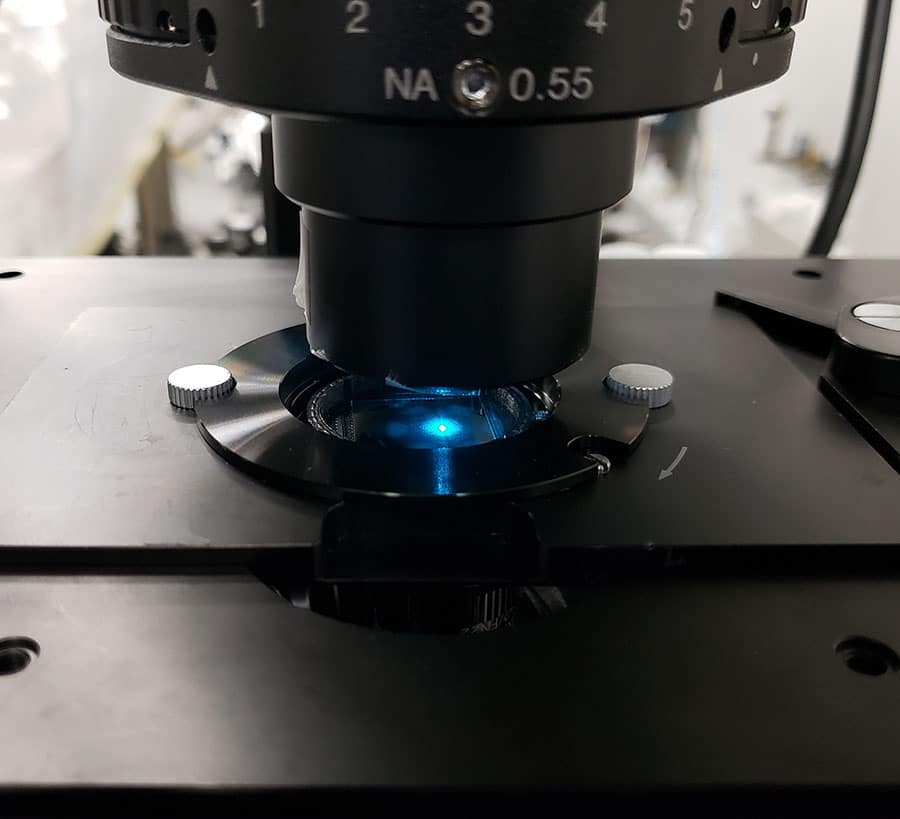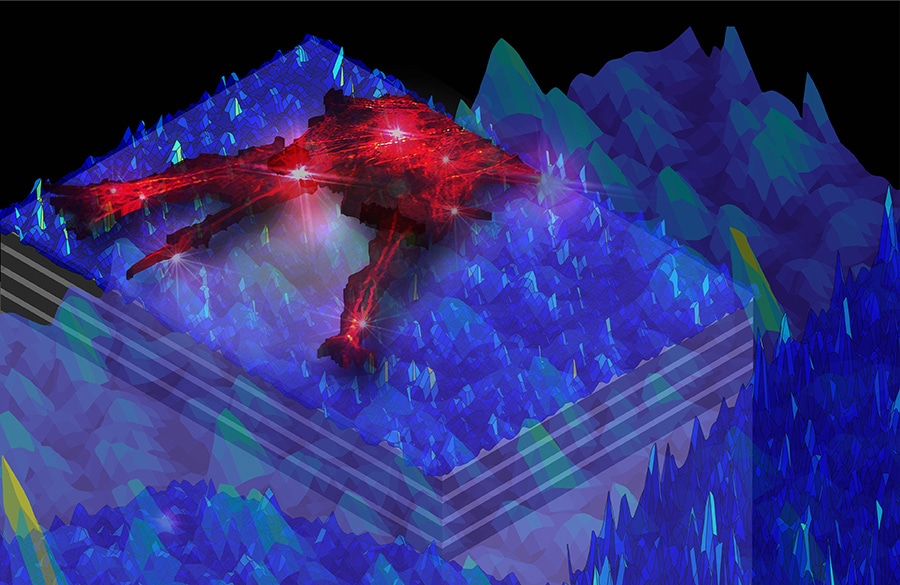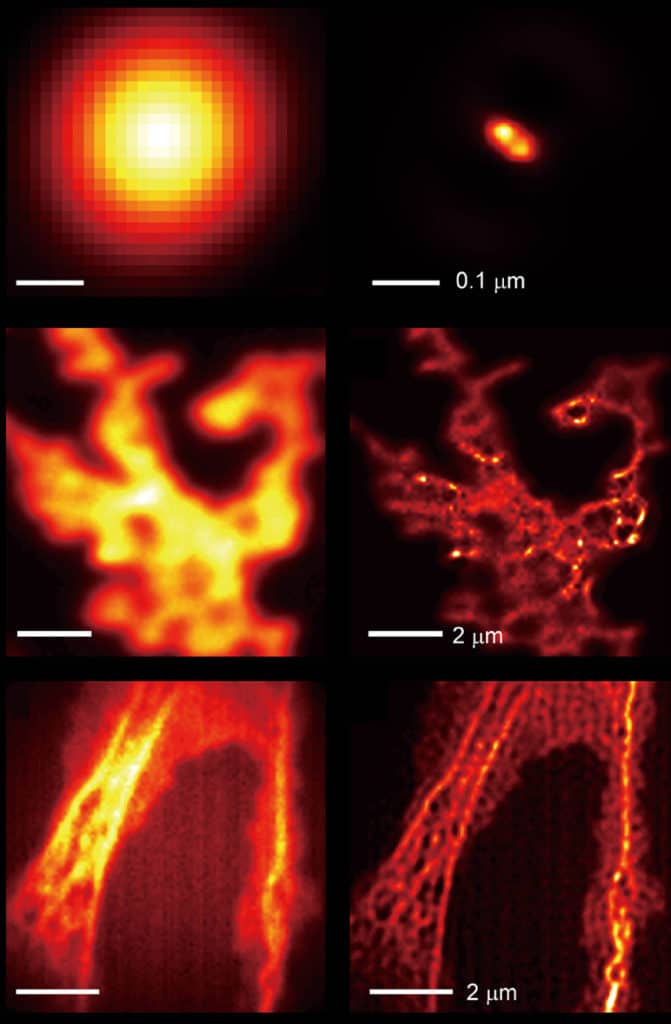Light microscopes are essential and useful when it comes to imaging live cells. However, they have a limitation: they cannot be used to see anything smaller as their resolution limit of 200 nanometers. It means any objects closer to this distance will not be observed as separate objects.
Undoubtedly, more powerful imaging tools are available commercially, but they can not be used to imaging live cells as the samples need to be placed inside a vacuum chamber.
Thanks to a new technology that has overcome this significant limitation of conventional light microscopes.
Developed by Electrical engineers at the University of California San Diego, this technology could significantly improve the resolution of an ordinary light microscope. It does this by turning a conventional light microscope into a super-resolution microscope. According to scientists, the technology could help them see detail and finer structures in living cells.

A light-shrinking material is a key to this technology. The material shortens the wavelength of light as it illuminates the sample. Due to this shrunken light, the microscope can see in higher resolution. In other words, it can be said that the material converts low-resolution light to high-resolution light.
Zhaowei Liu, a professor of electrical and computer engineering at UC San Diego, said, “It’s very simple and easy to use. Just place a sample on the material, then put the whole thing under a normal microscope—no fancy modification needed.”
This new technology has features like very high resolution and safe for live cells.

The light-shrinking material called a hyperbolic metamaterial- made from nanometers-thin alternating layers of silver and silica glass- is coated on a microscope slide. When light passes through the slide, its wavelengths shorten and scatter to generate a series of random high-resolution speckled patterns.
When a sample is mounted on the slide, it gets enlightened in various ways by this series of speckled light patterns. This creates a series of low-resolution images captured and then sorted out by a reconstruction algorithm to produce a high-resolution image.

Scientists used a commercial inverted microscope to test their technology. They could image fine features, such as actin filaments, in fluorescently labeled Cos-7 cells—qualities that are not discernible using just the microscope itself.
Scientists could also differentiate tiny fluorescent beads and quantum dots that were spaced 40 to 80 nanometers apart.
Scientists noted, “The super-resolution technology has great potential for high-speed operation.”
Journal Reference:
- Lee, Y.U., Zhao, J., Ma, Q. et al. Metamaterial-assisted illumination nanoscopy via random super-resolution speckles. Nat Commun 12, 1559 (2021). DOI: 10.1038/s41467-021-21835-8
